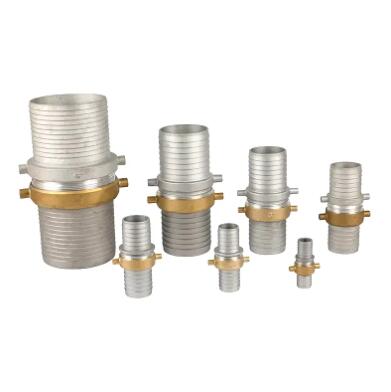Seamless Connections: The Art of Attaching and Detaching Hoses with Pin Lug Couplings
2024-01-03
Introduction:
In the intricate ballet of fluid transfer systems, the Pin Lug Coupling takes center stage as a masterful conductor of connections. This ingeniously designed coupling simplifies the process of attaching and detaching hoses, making fluid handling operations more efficient and user-friendly. In this blog, we unravel the artistry behind the process of connecting and disconnecting hoses using Pin Lug Couplings.
The Ensemble: Components of a Pin Lug Coupling
Before diving into the attachment and detachment process, let's familiarize ourselves with the components of a Pin Lug Coupling:
1. Hose Shank: The main body of the coupling designed to accommodate the hose.
2. Pins: Small protrusions strategically positioned on the hose shank.
3. Lugs: Corresponding openings or recesses on the mating part for the pins to engage
Attaching Hoses with Pin Lug Couplings:
1. Prepare the Hose and Coupling: Ensure that the hose end and the Pin Lug Coupling are clean and free from debris. Inspect the pins and lugs for any damage or obstructions.
2. Align the Pins and Lugs: Position the hose shank with the pins in alignment with the lugs on the mating part. Precision is crucial at this stage to ensure a secure and stable connection.
3. Insert the Pins: Slide the hose shank onto the mating part, allowing the pins to smoothly engage with the lugs. The coupling is designed to provide a snug fit, and the pins should effortlessly slide into place.
4. Secure with a Twist: Depending on the specific design, Pin Lug Couplings may require a twisting motion to secure the connection. This twist ensures a tight and reliable fit, minimizing the risk of accidental disconnection during fluid transfers.
Detaching Hoses with Pin Lug Couplings:
1. Release the Twist (if applicable): If the coupling involves a twisting motion for secure attachment, reverse this action to release the connection. Some couplings may simply require pulling the hose shank away from the mating part.
2. Disengage the Pins from Lugs: Carefully pull the hose shank away from the mating part, allowing the pins to disengage from the lugs. The precision in design ensures that this process is smooth and efficient.
3. Inspect and Clean: After detachment, inspect the pins, lugs, and hose shank for any signs of wear, damage, or contaminants. Clean the components as needed to maintain optimal performance.
Tips for Optimal Usage:
1. Ensure Proper Alignment: Precision in aligning the pins and lugs is crucial for a secure connection. Misalignment can lead to difficulties in attaching or detaching hoses.
2. Regular Maintenance: Periodically inspect Pin Lug Couplings for wear and tear. Replace any damaged components to maintain the coupling's functionality.
3. Use Proper Technique: Follow the manufacturer's guidelines for attaching and detaching hoses with Pin Lug Couplings. Adhering to recommended techniques ensures safe and efficient fluid transfers.
Conclusion:
The process of attaching and detaching hoses with Pin Lug Couplings is a harmonious dance of precision and simplicity. With a design focused on user-friendly connections, these couplings streamline fluid handling operations, contributing to the efficiency and reliability of various applications. As the curtains rise on fluid transfer systems, the Pin Lug Coupling takes a bow, showcasing its prowess in creating seamless connections in the intricate performance of fluid handling.



